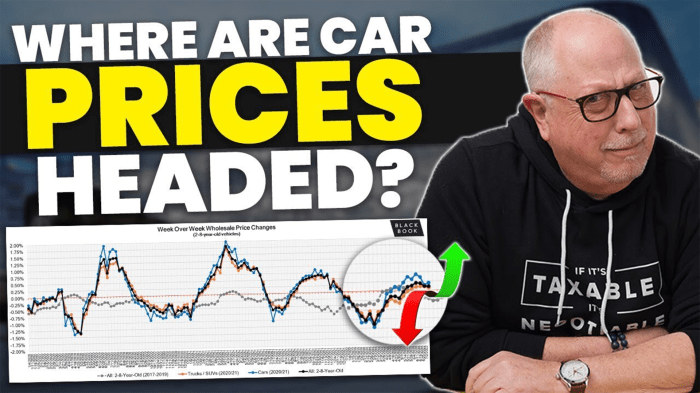Average Price of New Car in Canada
Average New Car Prices in Canada

Source: canadainfo.net
Average price of new car in canada – The Canadian automotive market, like its global counterparts, experiences fluctuating prices influenced by a multitude of factors. This article provides a comprehensive overview of the average new car prices in Canada, exploring variations across vehicle types, regions, and economic conditions. We will also compare Canadian prices with those in other countries and examine individual factors affecting the final cost of a new vehicle.
Average New Car Price by Vehicle Type, Average price of new car in canada
The average price of a new car in Canada varies significantly depending on the vehicle type. Sedans generally fall into a lower price bracket compared to SUVs and trucks, which command higher prices due to their size, features, and capabilities. Minivans occupy a middle ground, offering family-oriented practicality at a moderate price point.
| Vehicle Type | Average Price (CAD) | Price Range (CAD) | Sample Models |
|---|---|---|---|
| Sedan | $30,000 | $25,000 – $45,000 | Honda Civic, Toyota Corolla, Mazda3 |
| SUV | $45,000 | $35,000 – $70,000 | Honda CR-V, Toyota RAV4, Ford Escape |
| Truck | $60,000 | $40,000 – $90,000+ | Ford F-150, Ram 1500, Chevrolet Silverado |
| Minivan | $40,000 | $30,000 – $55,000 | Honda Odyssey, Chrysler Pacifica, Kia Carnival |
Price variations within each vehicle type are significantly influenced by engine size, features, and trim level. A larger engine typically increases the price, as do advanced safety features (like adaptive cruise control and lane-keeping assist), premium audio systems, leather interiors, and advanced driver-assistance systems. Higher trim levels generally include more features and a more luxurious interior, resulting in a higher price tag.
| Vehicle Type | Average Fuel Efficiency (L/100km) | Average Price (CAD) |
|---|---|---|
| Sedan | 7.0 | $30,000 |
| SUV | 9.0 | $45,000 |
| Truck | 12.0 | $60,000 |
| Minivan | 10.0 | $40,000 |
Regional Variations in Average New Car Prices
The average price of a new car can vary considerably across different regions of Canada. Several factors contribute to these regional differences.
| Province/Territory | Average Price (CAD) | Highest Price Observed (CAD) | Lowest Price Observed (CAD) |
|---|---|---|---|
| Ontario | $42,000 | $75,000 | $28,000 |
| British Columbia | $45,000 | $80,000 | $30,000 |
| Alberta | $40,000 | $70,000 | $26,000 |
| Quebec | $40,000 | $72,000 | $27,000 |
Provincial sales taxes, import costs, and variations in consumer demand significantly impact pricing. For example, provinces with higher sales taxes will generally have higher overall vehicle prices. Areas with higher demand, such as major urban centers, may also experience higher prices due to increased competition and market dynamics. A comparison of urban versus rural areas within a specific province, like Ontario, would reveal a higher average price in Toronto compared to smaller towns due to higher demand and cost of living.
Impact of Economic Factors on Average New Car Prices
Several macroeconomic factors influence new car prices in Canada. Inflation, interest rates, financing options, and currency exchange rates all play a significant role.
The average price of a new car in Canada fluctuates based on various factors, including model and province. It’s interesting to compare this to the figures south of the border; for a perspective on the American market, check out this resource on the average price of a new car in america. Understanding both markets provides a broader picture of automotive pricing trends in North America, and helps to put the Canadian average into context.
A line graph illustrating inflation’s impact on new car prices over the past five years would show a generally upward trend, reflecting the overall increase in the cost of goods and services. The slope of the line would indicate the rate of price increase, potentially steeper during periods of higher inflation. This reflects the increased cost of raw materials, manufacturing, and transportation.
Higher interest rates increase the cost of financing a new car, making monthly payments more expensive and potentially reducing consumer demand. Conversely, favorable financing options, such as low-interest loans or attractive lease deals, can stimulate demand and offset some of the impact of inflation. Fluctuations in the Canadian dollar against other currencies, particularly the US dollar (given the significant number of imported vehicles), directly impact the price of imported cars.
A weaker Canadian dollar leads to higher prices for imported vehicles.
Comparison with Other Countries

Source: postmedia.digital
Comparing Canadian new car prices with those in other countries provides valuable context. This comparison considers factors like currency exchange rates and purchasing power parity (PPP).
| Country | Average Price | Currency | Purchasing Power Parity Adjustment |
|---|---|---|---|
| Canada | $40,000 | CAD | – |
| United States | $45,000 | USD | (Adjusted for PPP) |
| Germany | €48,000 | EUR | (Adjusted for PPP) |
Differences in average car prices between countries are attributed to several factors, including taxes (like VAT in Europe), import tariffs, regulations, labor costs, and consumer demand. For example, higher taxes on vehicles in some European countries contribute to higher prices compared to North America. Stringent safety and emission regulations can also influence manufacturing costs and thus the final price.
Factors Affecting Individual Car Prices

Source: caredge.com
Beyond the base model price, numerous factors influence the final cost of a new car. These factors can be broadly categorized into safety, technological, and comfort features.
- Safety Features: Advanced driver-assistance systems (ADAS), adaptive cruise control, lane departure warning, automatic emergency braking.
- Technological Features: Navigation systems, premium sound systems, infotainment screens, smartphone integration (Apple CarPlay, Android Auto).
- Comfort Features: Leather upholstery, heated and ventilated seats, sunroof, power adjustable seats.
- Engine and Drivetrain: Engine size and type (gasoline, hybrid, electric), all-wheel drive (AWD).
- Exterior Styling: Unique paint colors, special trim packages.
- Interior Design: Upgraded materials, ambient lighting.
- Warranty and Maintenance Packages: Extended warranty options.
- Dealer Markups: Additional charges beyond the manufacturer’s suggested retail price (MSRP).
- Optional Packages: Bundled features offered by the manufacturer.
- Destination and Delivery Charges: Fees associated with transporting the vehicle to the dealership.
For instance, adding a panoramic sunroof, a premium sound system, and leather interior can significantly increase the price of a vehicle, sometimes by several thousand dollars. Similarly, opting for all-wheel drive instead of front-wheel drive usually results in a higher price tag.
FAQ Corner: Average Price Of New Car In Canada
What are the typical down payment amounts for new cars in Canada?
Down payment amounts vary widely depending on the loan terms, credit score, and the price of the vehicle. However, a down payment of 10-20% is common.
How long does it typically take to get a new car delivered in Canada?
Delivery times depend on the manufacturer, model, and current supply chain conditions. Expect delays ranging from a few weeks to several months.
Are there any government incentives or rebates available for purchasing a new car in Canada?
Provincial and federal governments may offer incentives for fuel-efficient or electric vehicles. Check with your local government for details.
What is the average lifespan of a new car in Canada?
With proper maintenance, a new car can last 10-15 years or more, depending on the make, model, and driving conditions.




















